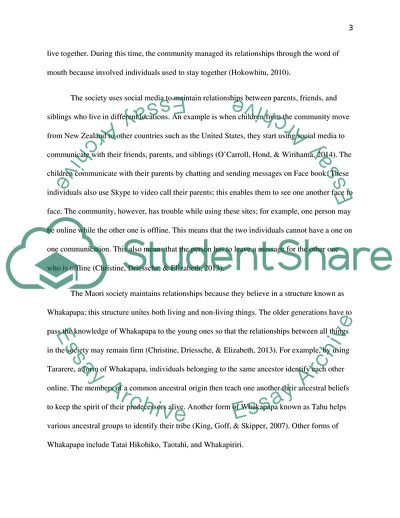Cite this document
(Maori Society's Use of Social Media to Preserve Indigenous Knowledge Literature review Example | Topics and Well Written Essays - 2000 words, n.d.)
Maori Society's Use of Social Media to Preserve Indigenous Knowledge Literature review Example | Topics and Well Written Essays - 2000 words. https://studentshare.org/history/1841608-indigenous-knowledge-in-global-contexts
Maori Society's Use of Social Media to Preserve Indigenous Knowledge Literature review Example | Topics and Well Written Essays - 2000 words. https://studentshare.org/history/1841608-indigenous-knowledge-in-global-contexts
(Maori Society'S Use of Social Media to Preserve Indigenous Knowledge Literature Review Example | Topics and Well Written Essays - 2000 Words)
Maori Society'S Use of Social Media to Preserve Indigenous Knowledge Literature Review Example | Topics and Well Written Essays - 2000 Words. https://studentshare.org/history/1841608-indigenous-knowledge-in-global-contexts.
Maori Society'S Use of Social Media to Preserve Indigenous Knowledge Literature Review Example | Topics and Well Written Essays - 2000 Words. https://studentshare.org/history/1841608-indigenous-knowledge-in-global-contexts.
“Maori Society'S Use of Social Media to Preserve Indigenous Knowledge Literature Review Example | Topics and Well Written Essays - 2000 Words”. https://studentshare.org/history/1841608-indigenous-knowledge-in-global-contexts.


